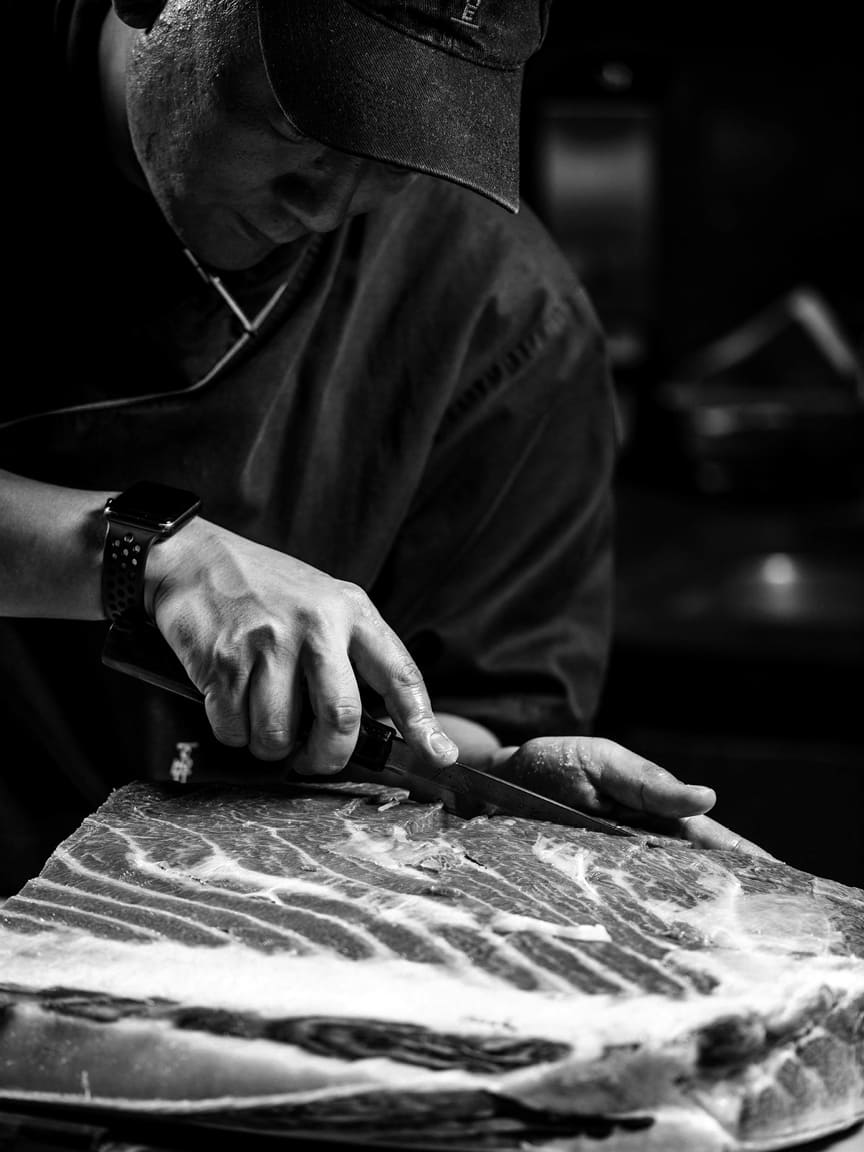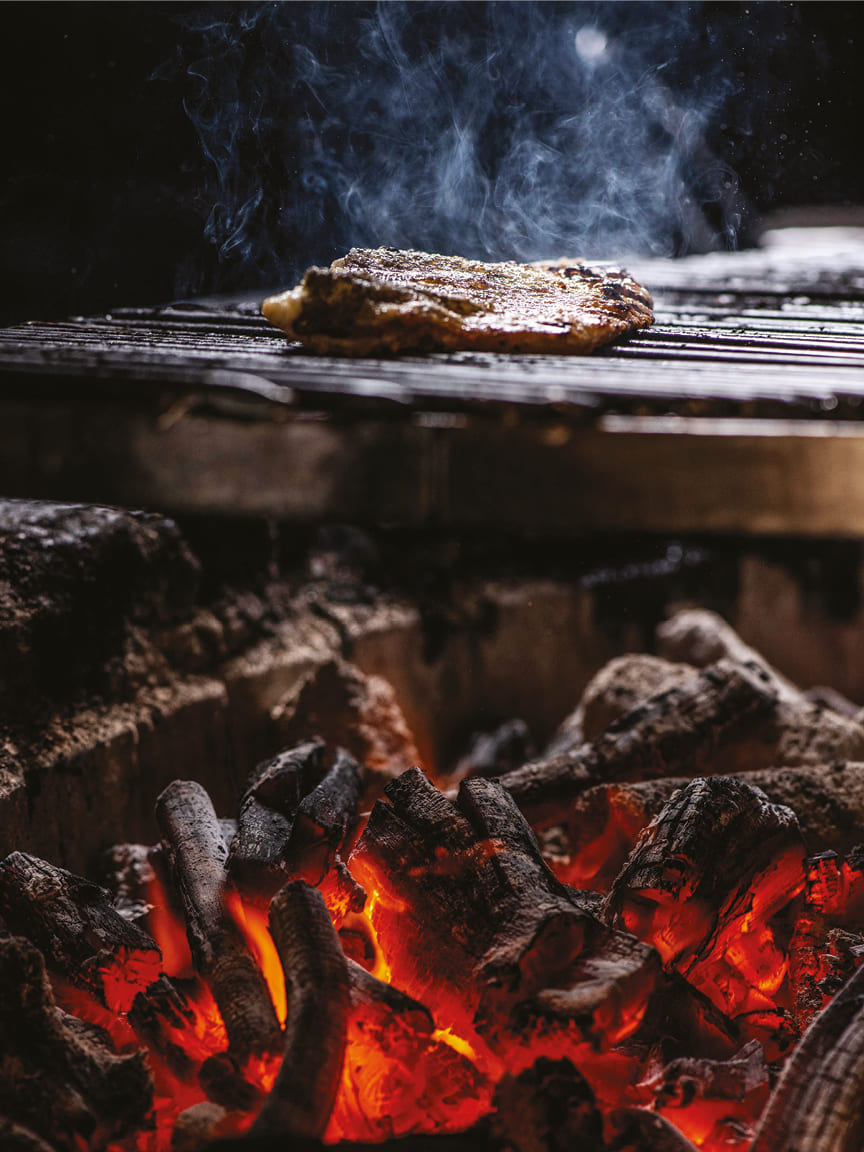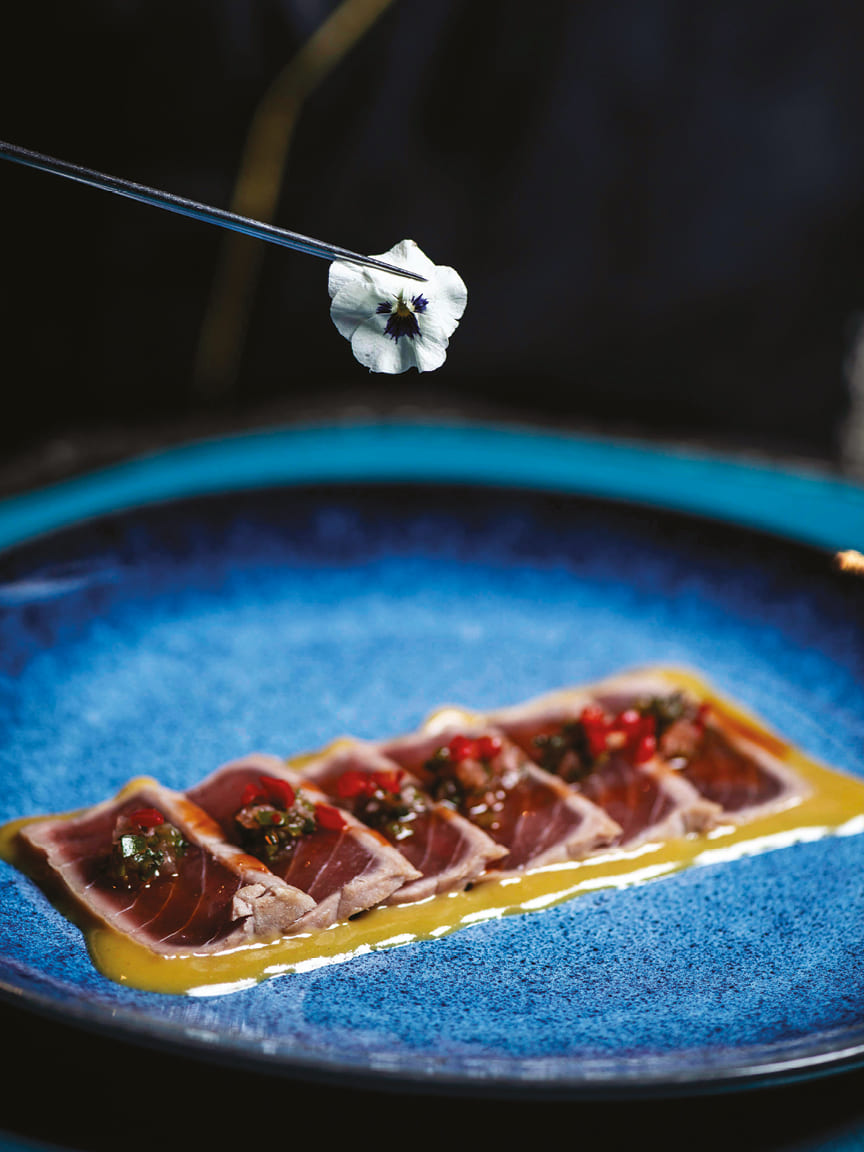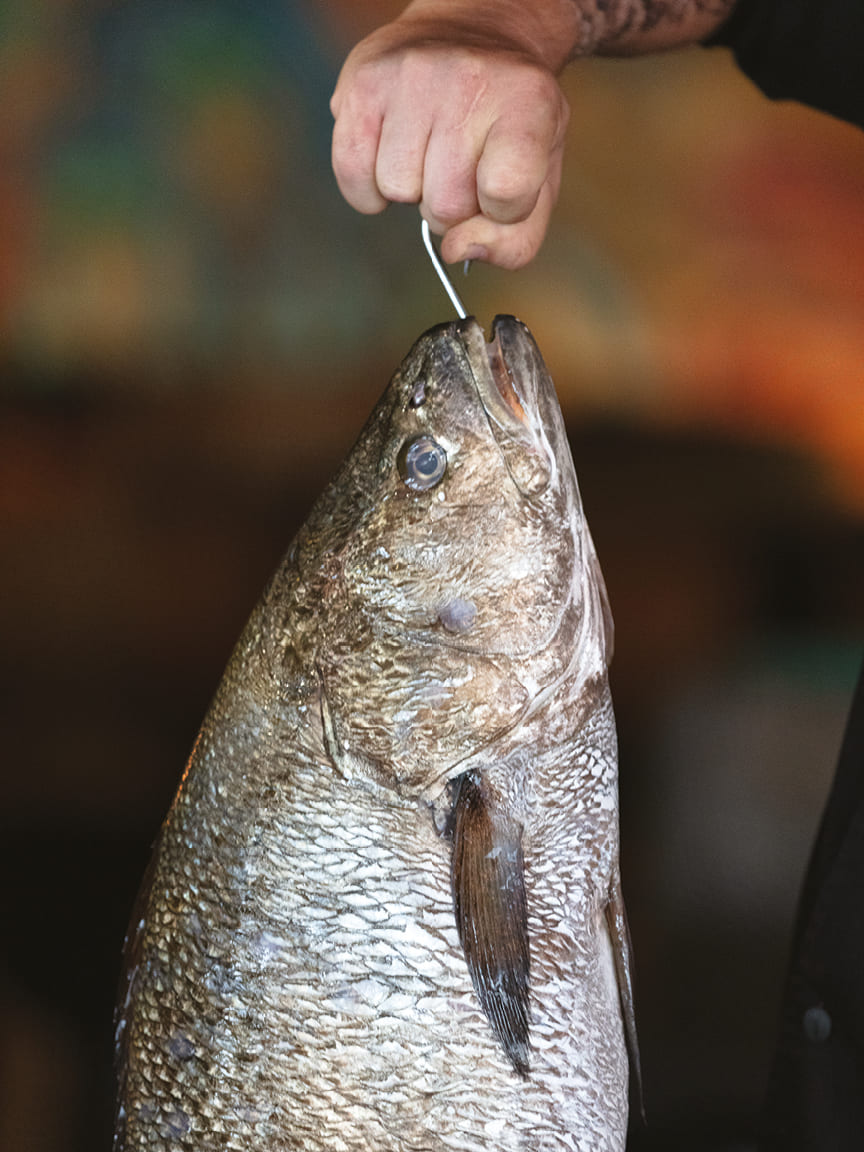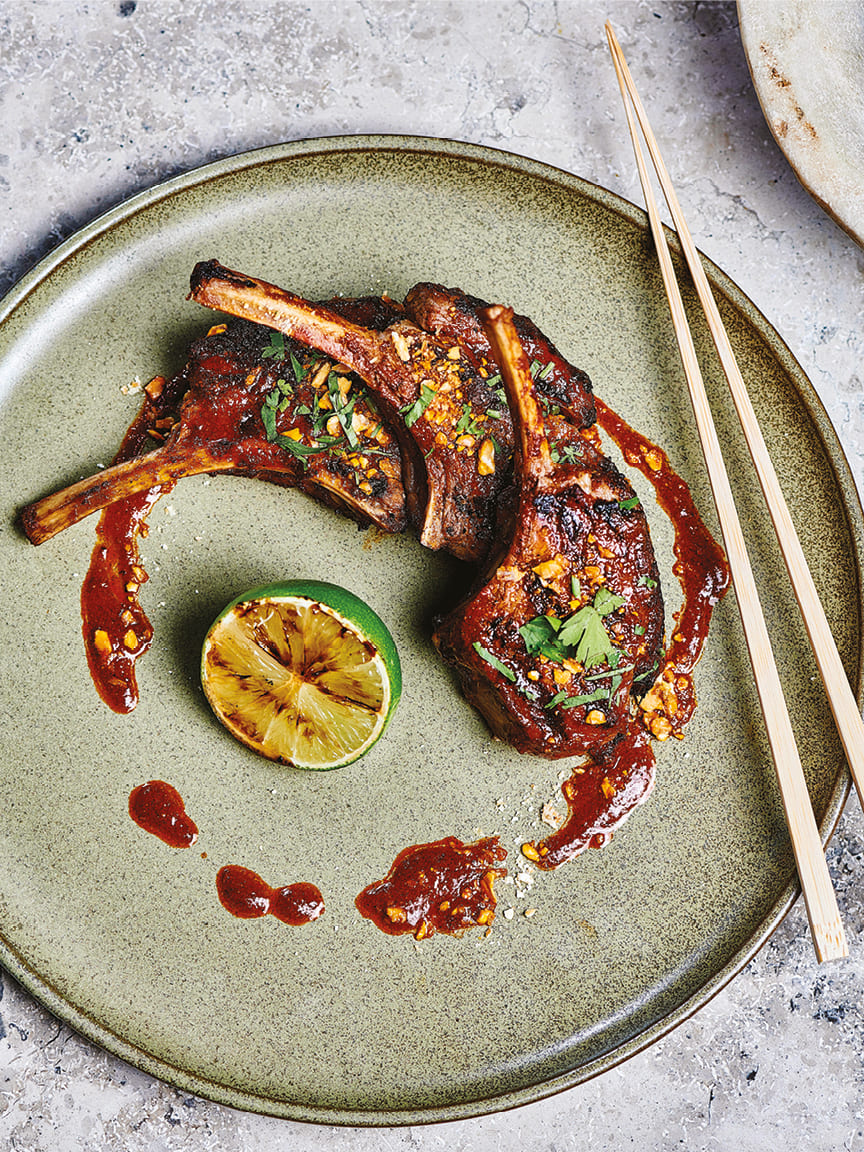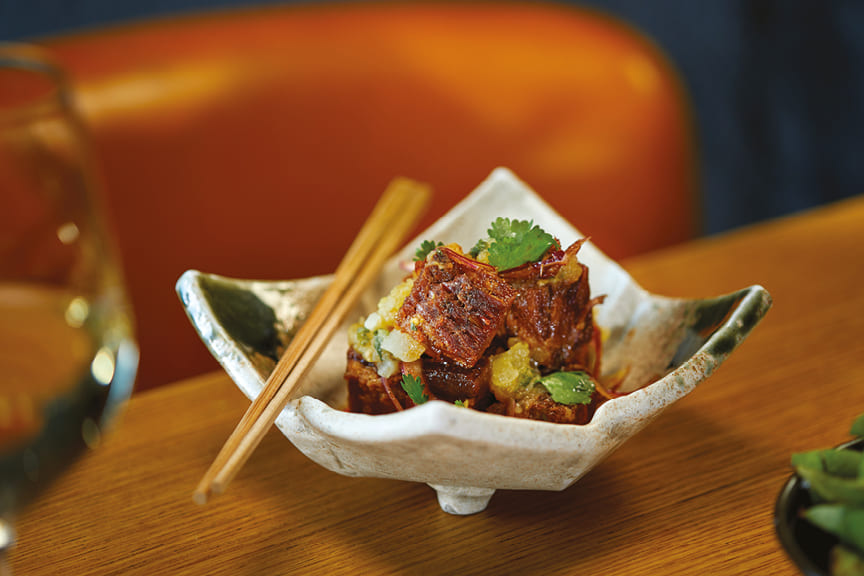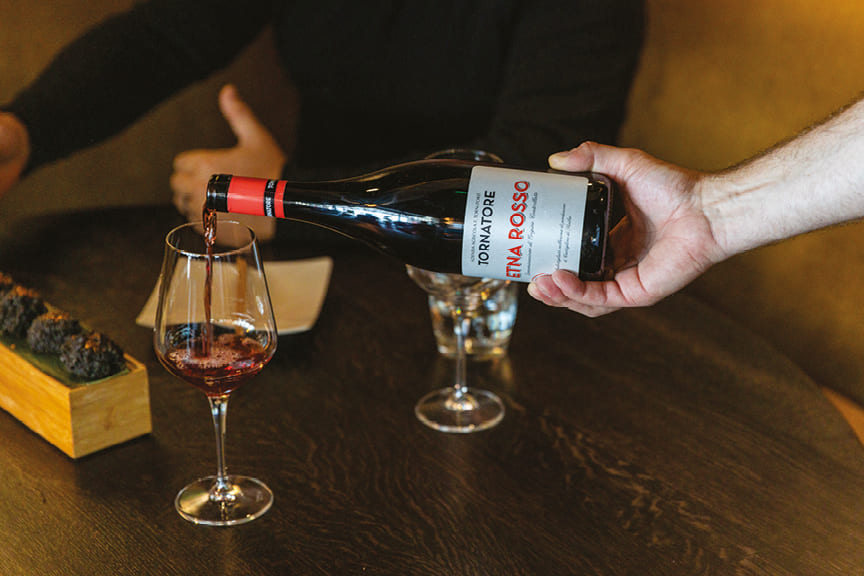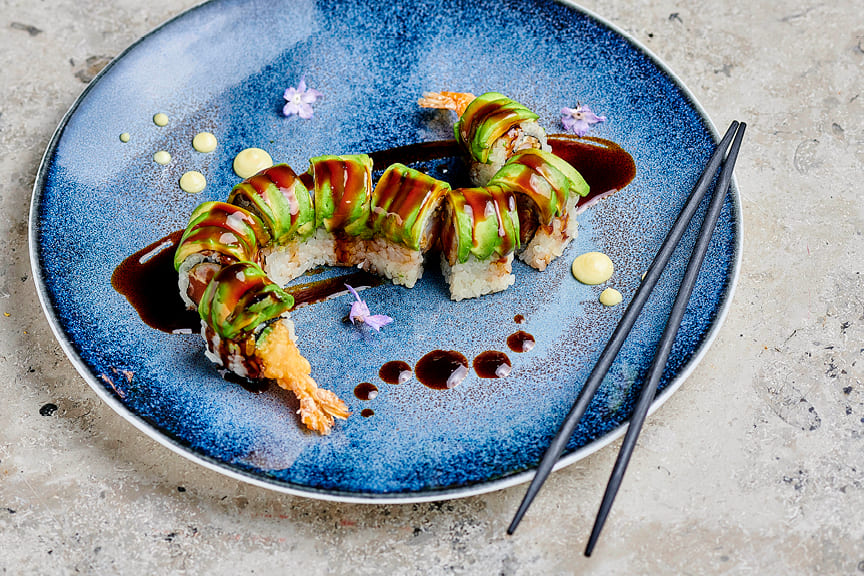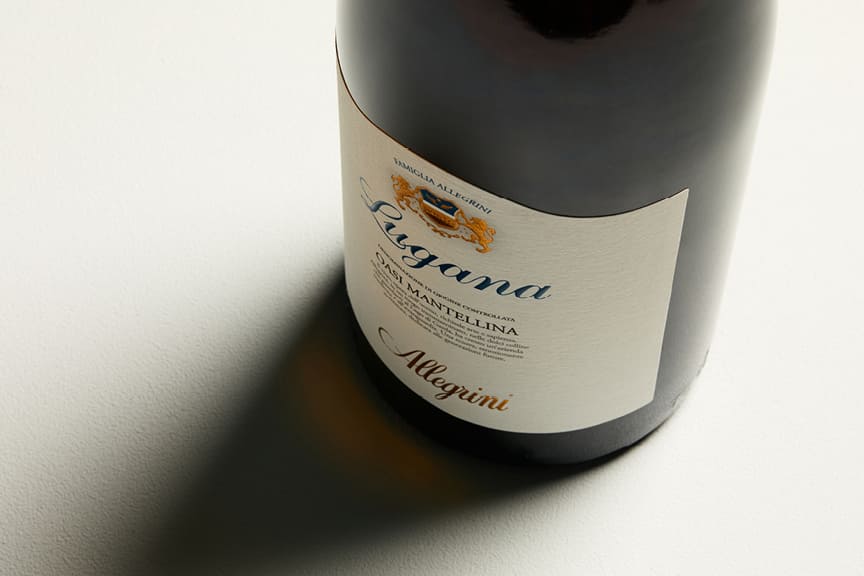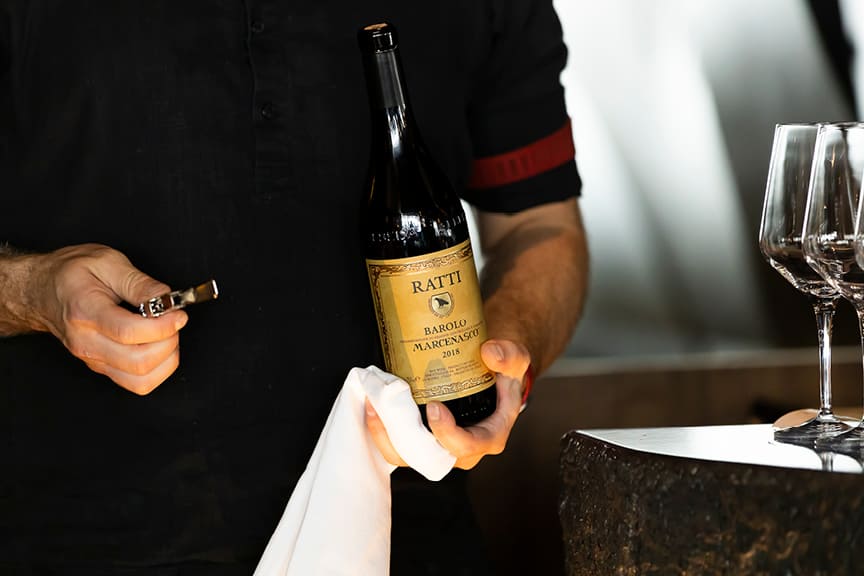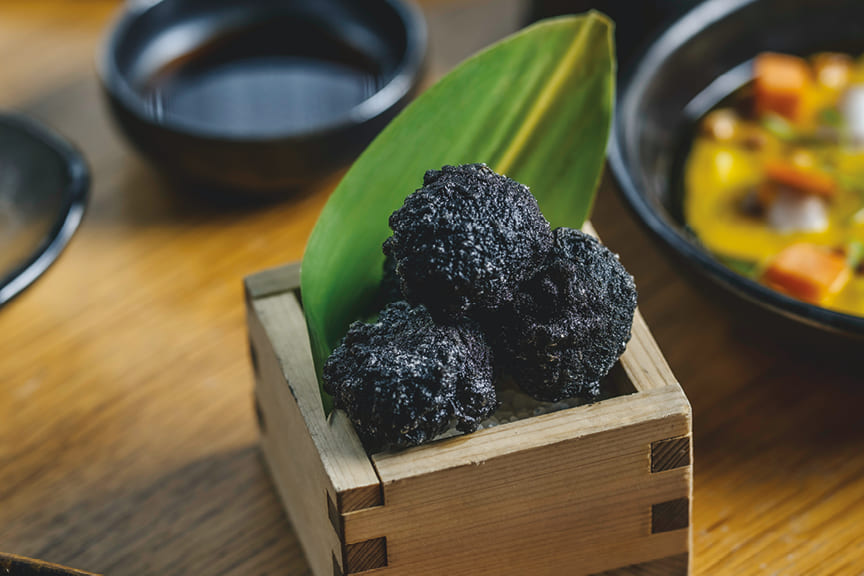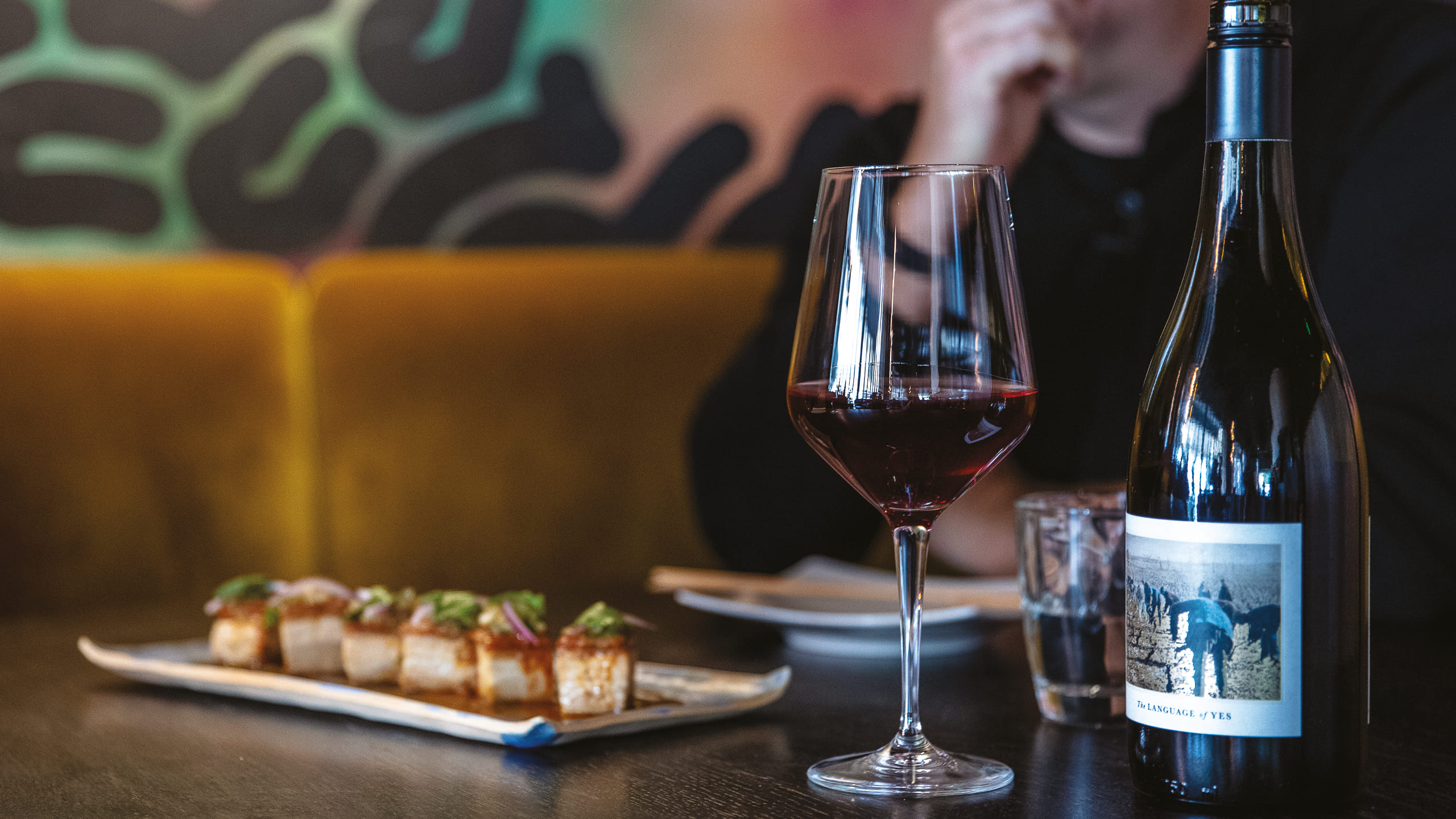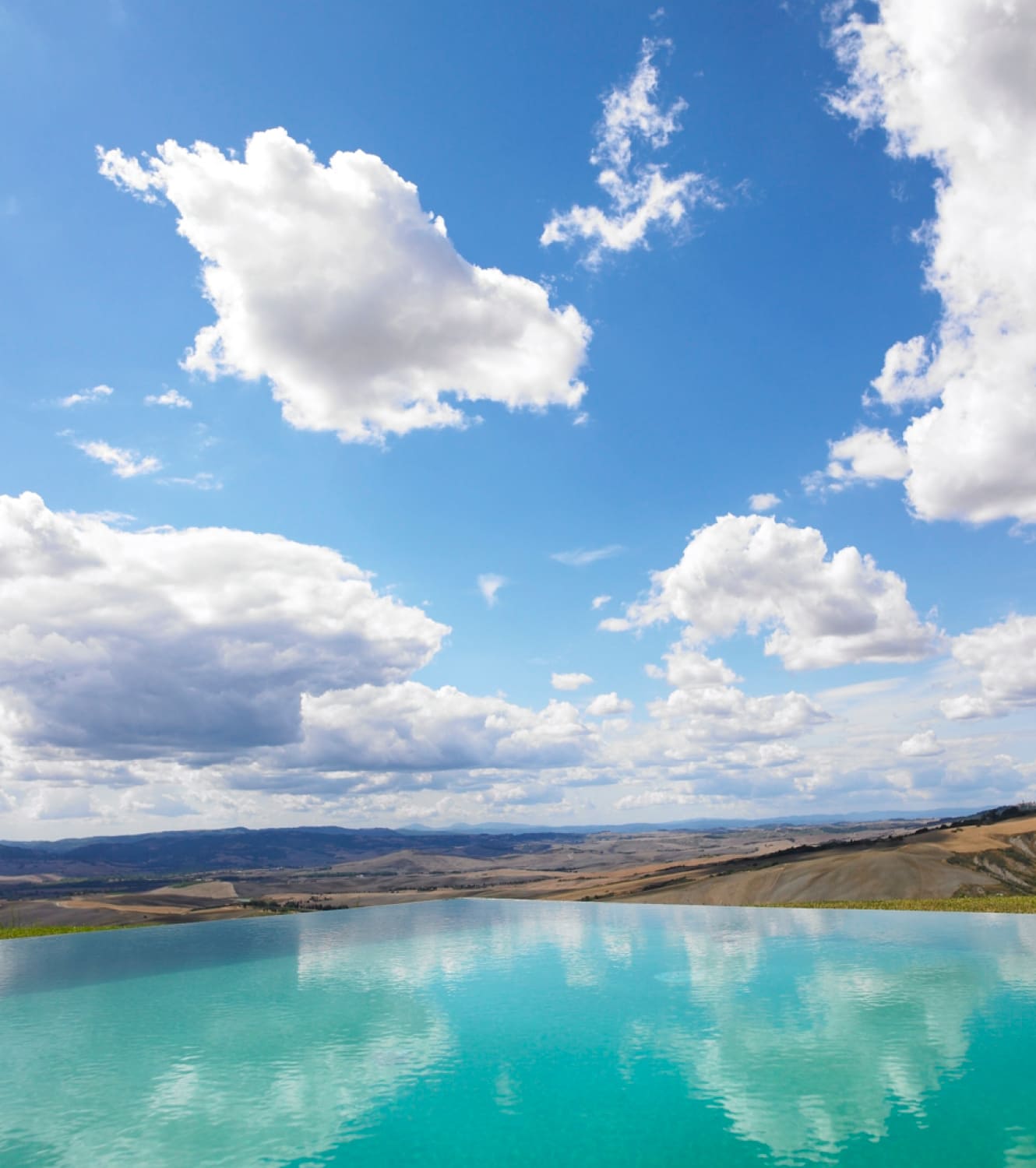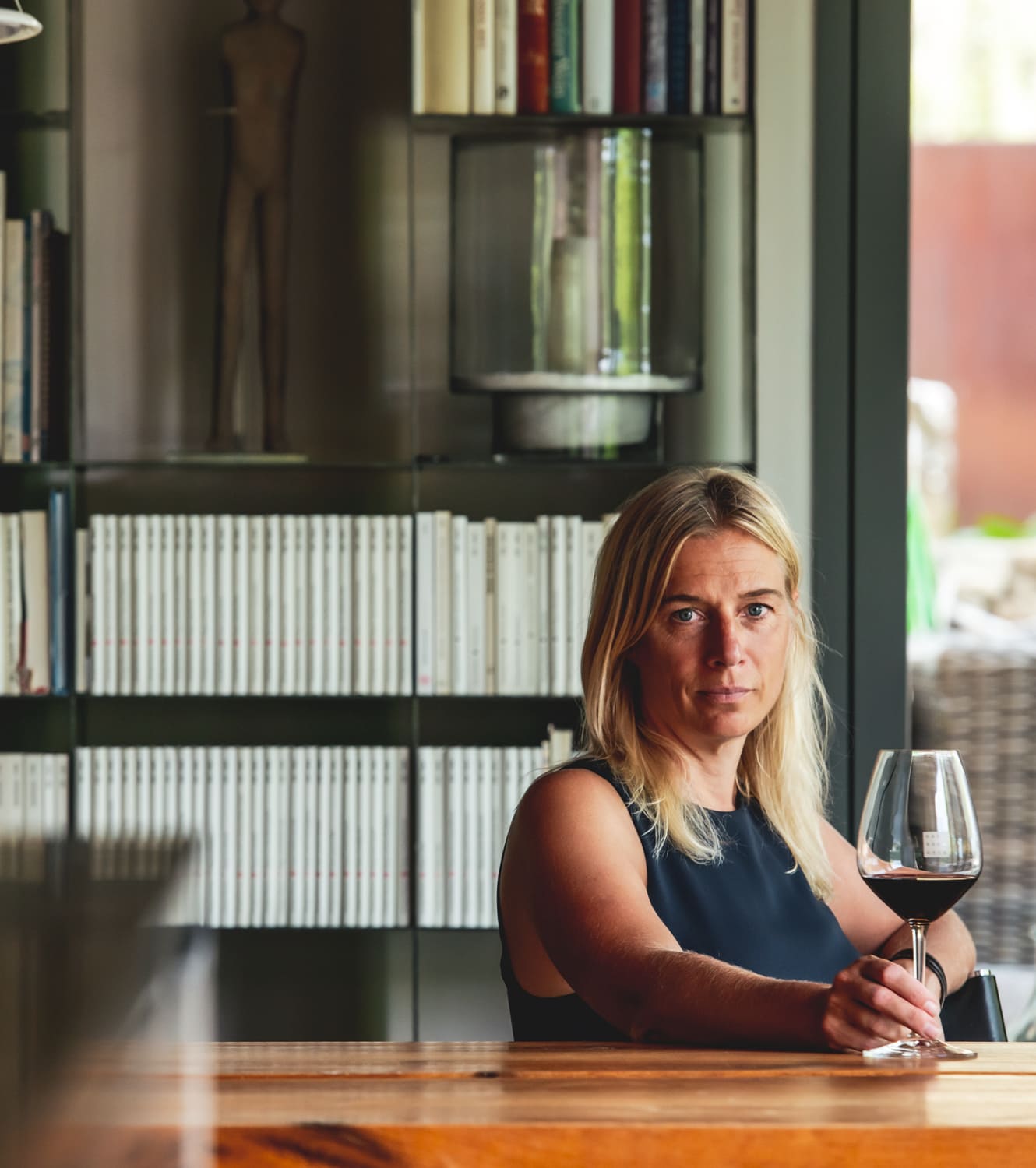
A PERFECT BLEND
Chotto Matte specializes in Nikkei cuisine, a Peruvian and Japanese invention shaped by movement and migration. But how to pair with wine? Nargess Banks sits down with the founder, Kurt Zdesar, to explore
“My life is food. I love food. I travel to eat. I live to eat. And I work in the restaurant world getting paid to do what I love the most,” says Kurt Zdesar, the light in his eyes illuminating his statement. The founder of Chotto Matte continues in measured sentences, but with youthful wonderment. “It’s on my travels where I get to see and experience new cuisines. It’s not that I look out for the next big thing, but when I come across something I love, I have to make it happen.”
We’re meeting at one of his two London restaurants in Marylebone to discuss his mission to take Nikkei cuisine to key destinations around the world, Chotto style of course, which means in stylish settings, and with a high dose of commissioned art and music. Meanwhile we’ve brought along a few wines from the Maze Row collection to pair with Chotto’s most popular recipes. It’s a bit of an explorative mission, which works on some dishes, less so on others.
“We’ve always had a strong wine program. Not necessarily the biggest or the most expensive, but a unique one,” Zdesar says as he reviews the wines and the dishes suggested by him and his team (see pairings below). “I’m looking forward to this,” he says with a smile – one of many, as Zdesar proves to be a generous host and interviewee. He is also a surprisingly candid one. “The main difficulty is in pairing an entire meal with one or two wines, simply because of the sheer diversity of Nikkei flavors. On one dish you may find spice, sweetness, sour – a host of flavors that react in your mouth. Then in the following you’ll experience a completely different profile.”
THE CHOTTO STORY
Zdesar started Chotto Matte a decade ago with a single space in Soho, London, and has since expanded to have two more UK outlets, and with restaurants in Miami and Toronto, Doha and Riyadh. Next Spring will see the opening of Chotto Los Angeles and San Francisco, followed by outposts in Nashville and Philadelphia, Rome and Milan.
Chotto specializes in Nikkei cuisine, a Peruvian and Japanese invention with a layered past, shaped by movement and migration. The word Nikkei refers to Japanese émigrés and their descendants who have a significant presence in South America, especially in Brazil and Peru, with settlements that started over a century ago when farmers came to work at coastal sugar plantations. Nikkei cuisine is a lively blend of the two cultures’ culinary traditions, combining the best of Japanese clean cooking with Peruvian warmth and hospitality, while working with fresh seasonal ingredients. Now Chotto is taking a gastronomy that is over hundred years old on another culinary world journey.
It needs to be said that Zdesar is somewhat of a rockstar in the restaurant world – his all-black signature look is a visual nod to this – having established the famed Nobu brand in Europe, then successfully set up the dumpling chain Ping Pong, among other ventures. He tells me he came across Nikkei cuisine by chance. In Shanghai in 2004 looking for talent and recipes for Ping Pong, he happened upon a restaurant offering a new concept for him: Nikkei. Naturally, he had to have taste. “Wow, it was so vibrant, fresh, light,” he says, speaking quickly, his voice charged with enthusiasm. “I thought to myself, I could eat this daily, because it’s clean and fresh, pure, healthy, but also exciting and tantalizing to the tastebuds. I knew I had to do something with it. It was an overwhelming feeling.”
The original Chotto Soho was a heady affair. The opening, in 2013, hosted the Dazed & Confused post runway party to end London Fashion Week, which pretty much set the scene for what was to become one of the city’s hottest night-time destinations. There was commissioned street art inside, live DJs and culinary theater. This was dining as pure experience – and the place was an instant success among twenty and thirty-somethings.
The brand has since evolved – matured may be the right description. Others started mimicking the Soho experience and what was once considered fresh needed a rethink. And so Zdesar took the opportunity during the pandemic closures to completely rebrand Chotto, creating a new logo, restructuring the business and signing sites for new venues around the world. “We’re not a brand that will stay stagnant. We’re evolving – constantly. Soho opened ten years ago, the customer was younger then and so was I. We are growing up together,” he muses. “I see this as the beginning of the next ten years.”
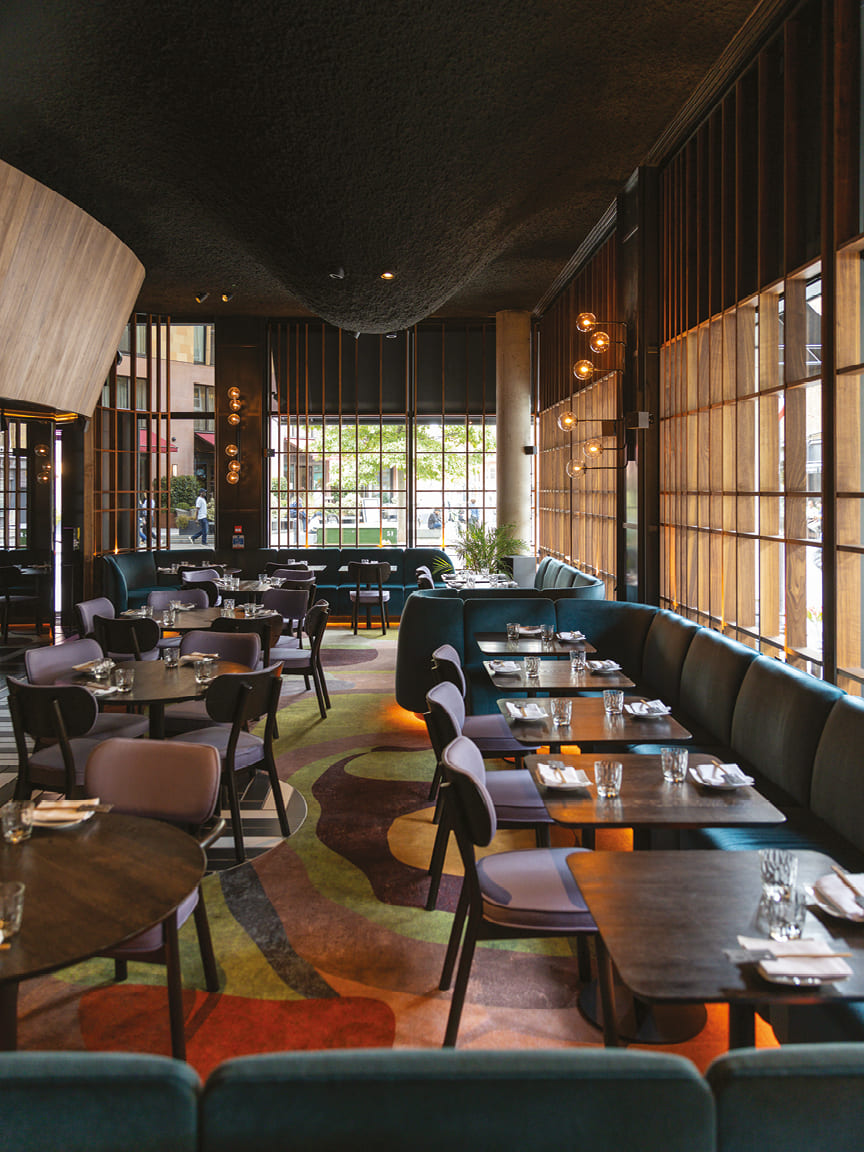
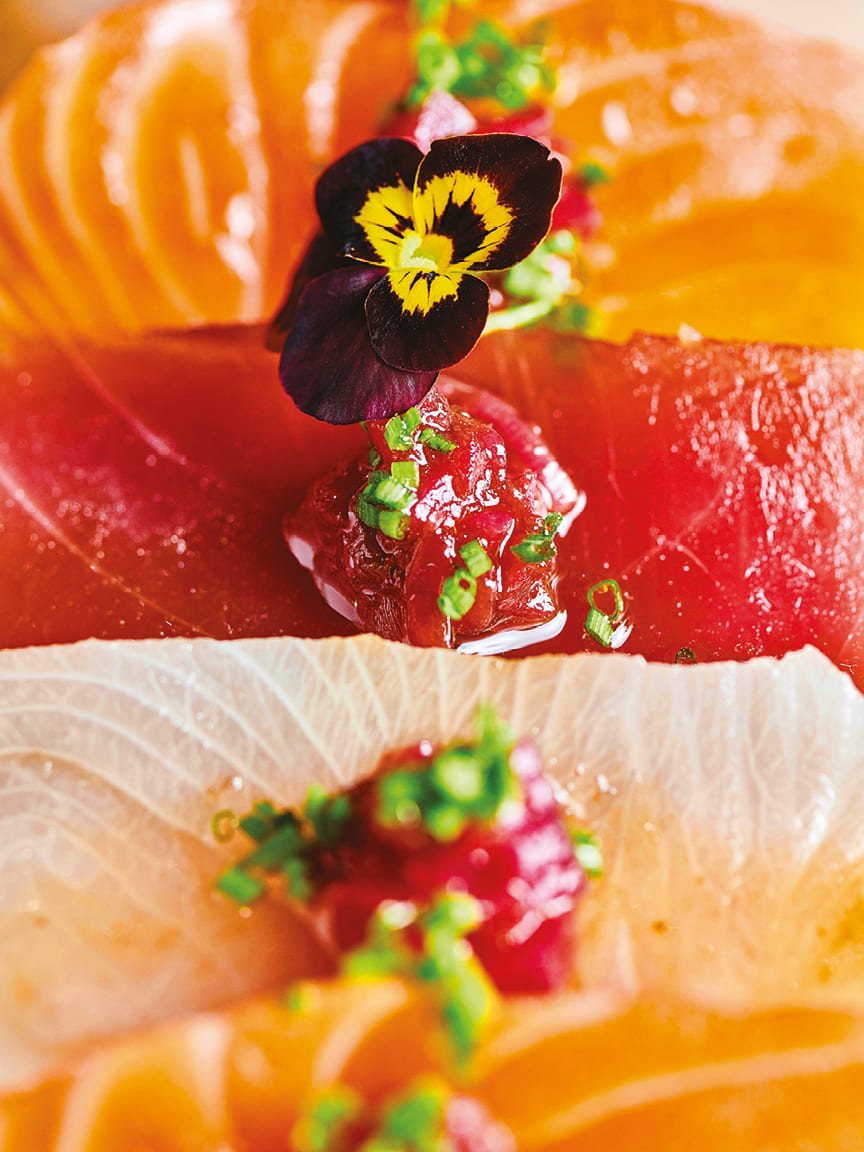
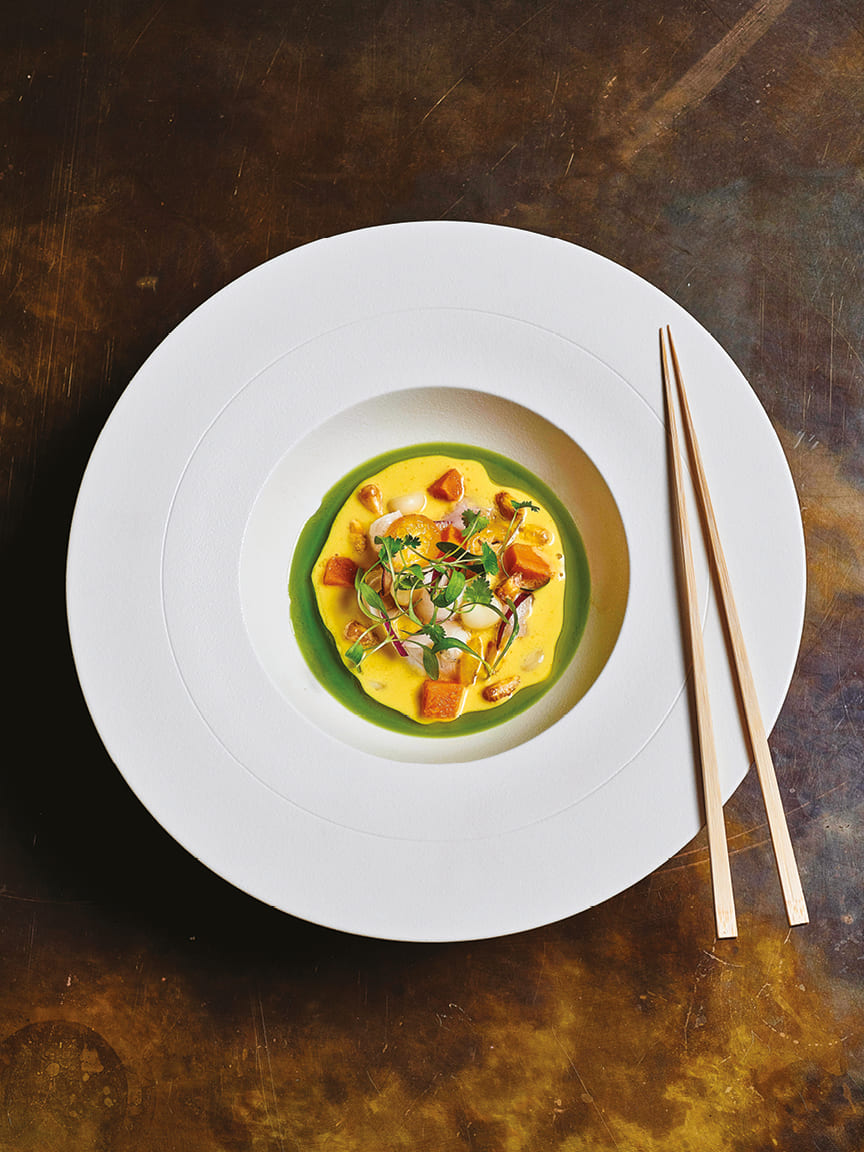
Chotto Matte restaurants are all about design and creating environments that add to the visceral experience of dining, while the food is an evolution of Peruvian-Japanese Nikkei cuisine
Nikkei cuisine combines the best of Japanese clean cooking with Peruvian warmth and hospitality
FRESH STARTS
Experience at the new Chotto is now centered confidently around the culinary delights. And the dishes certainly bring a smile to your face. These are works of arts, artisan wonders, beautifully created, the colors and textures adding to the sensory experience. Everything here is designed to be unique, from the bespoke furniture to the commissioned artwork, even the plates, created by an unnamed artisan (he won’t divulge the maker) who Zdesar happened upon on a family vacation. They act as the chef’s canvas with shapes and colors designed to complement each dish. The new Chotto offers a more adult form of culinary theater.
“The brand is my baby and I have a very strong idea as to what it should be,” says Zdesar as, chopsticks in hand, we dig into our first dish. The dragon roll happens to pair perfectly with the Pietrarizzo Etna Bianco, from the Tornatore estate in Sicily. “Everything we do is about being honest, original and unique. The product, the ingredients, the wines, they all have to be the best we can source.” Zdesar trained as a chef but stepped away from the kitchen a long time ago. “Now I work side-by-side with our head chef Jordan Sclare, constantly evolving the menu. We’ve worked together for almost 30 years, so he understands my mental vision and has the skills to recreate it.”
He tells me his first Chotto menu mood-board featured pictures of art and architecture, of textiles, color palates and powder paint used in Peru to paint walls – everything other than food. For Zdesar it is about mood creation. “The dishes are artistic, as are the plates and how we serve the food. I see it as craft and artistry as much as a meal.” As if to prove this point, the Argentinian red prawn truffles arrive. The sculptural dish is meant to mimic a black truffle, meanwhile inside these rough looking parcels are delicate sweet prawns, with the whole thing infused with truffle, which pairs well with our Tornatore Etna Rosso.
We discuss how with most dishes, typically the full satisfaction arrives in those first few mouthfuls, after which the excitement levels dip. It therefore follows that smaller portions that are made to be shared, say nine courses, will provide nine flavor profiles. So, to ensure guests experience a full flavor journey, Chotto has put together set tasting menus, including a plant based and vegan one.
“If our guests decide to choose individual dishes, we steer them away from ordering two with miso in a row, instead making sure they have a journey of flavors and temperatures,” he says. “Nikkei does this so well. You can start with a light dish with citrus notes that get your appetite going, follow with a richer fried dish, and continue with a lighter acidic dish, such as a ceviche.”
Zdesar is working hard for the restaurants to be as organic and mindful of waste and the environment as possible. He is also keen to support locals. “Like our food supply chain, our wine program is about supporting the local talent, local vineyards and local economies.” He sees customers drinking wines from their own region; wines they are more familiar with. Chotto Miami therefore may feature a high dose of American wines, but since the customers tend to be well traveled, the program also has interesting world wines. It’s about adapting to each region: “In Milan and Rome Italian wines will feature heavily. If we don’t, there will be carnage,” he says jokingly.
For easy navigation Chotto breaks its wine program into sections: light, medium and full bodied. That, alongside the descriptive notes and flavor profile, helps the customer choose independently, although there is a sommelier at hand to help. The other criteria is to offer wines that are a reminder of certain classics but can be served at a more affordable price. He feels New World wines can offer a chance to explore great wines within the budget to broaden people’s experience and create a more interesting wine list.
Zdesar admits the wine program is evolving with the customer profile. In Toronto, where Chotto has been voted best restaurant in the city, the location underneath the stock exchange means guests are corporate types who are likely to spend generously on wine. The same applies to Miami, where Chotto customers are on vacation and will spend money for a fun experience. He is excited to see the development in San Francisco and Los Angeles.
In San Francisco, Chotto will be just off Union Square, right in the heart of the city, in a purpose-built restaurant space. The Beverly Hills restaurant is on North Cannon Drive, with a rooftop overlooking the hills and onto the Hollywood sign in the distance. “I’m setting up a permanent telescope,” he muses. And since it’s al fresco dining, the wine program will feature high on whites and rosés, many of which are likely to be from California vineyards.
We have brought along two wines from The Language of Yes, a producer from Santa Maria Valley, in California’s central coast. The Grenache we pair with Barriguita de chanchito, a rich and spicy dish of pork belly. Meanwhile the Syrah is a marriage made in heaven with the Chuleta de cordero ahumada, a flavorsome delicate lamb chop, a dish inspired by my host’s travels to the stylish Greek island of Mykonos. Another layer added to the tapestry of Nikkei as it sets sail around the world in a culinary migration of sorts.

“The dishes are artistic, as are the plates and how we serve the food. I see it as craft and artistry as much as a meal”

PAIRING CHOTTO MATTE’S NIKKEI WITH MAZE ROW WINES, WITH KURT ZDESAR
Dish: Dragon roll
Ingredients: prawn tempura, salmon, avocado, unagi sauce
Wine: Tornatore 2019 'Pietrarizzo' Etna Bianco
Region: Sicily
Varieties: 97% Carricante, 3% Catarratto
Vineyards: Northern slopes, Etna DOC
Fermentation: Inoculated in 50 hl oak barrels, no MLF
Aging: 12 months in 50 hl oak and cement tank
Zdesar’s tasting notes:
“The perfect acidity and stoniness in the wine complements the buttery avocado and unagi sauce with its rich, sweet soy flavor profile, and the touch of fat you get from the tempura prawns and salmon inside.”
Dish: Argentinian red prawn truffles
Ingredients: truffled shiitake mushroom, spring onion
Wine: Tornatore 2019 Etna Rosso
Region: Sicily
Varieties: 95% Nerello Mascalese, 5% Nerello Cappuccio
Vineyards: Northern slopes, Etna DOC
Fermentation: Inoculated in concrete tanks
Aging: 6 months in large oak barrel, 3 months in concrete tank
Zdesar’s tasting notes:
“Chef Jordan’s idea, the image is meant to replicate truffles; then inside these little parcels of deliciousness are sweet red Argentinian prawns, with the whole thing infused with truffles, which goes extremely well with Etna Rosso.”
Dish: Nasu miso
Ingredients: eggplant, miso, apricot, puffed soba, sesame seeds
Wine: Allegrini 2021 'Oasi Mantellina' Lugana
Region: Valpolicella
Varieties: 96% Turbiana, 4% Cortese
Vineyards: 40ha, Pozzolengo, Lugana DOC
Fermentation: Spontaneous in stainless steel
Aging: A few months on lees in stainless steel
Zdesar’s tasting notes:
“A vegetarian dish, the aubergine (eggplant) is sautéed in miso, sake, mirin and apricot to add natural sweetness and balance the flavors. The dish enhances the wine’s acidity and citrus notes. It’s a great match.”
Dish: Wagyu sirloin
Ingredients: Japanese grade A5 wagyu beef with truffle teriyaki sauce
Wine: Ratti 2018 'Marcenasco' Barolo
Region: Piedmont
Varieties: 100% Nebbiolo
Vineyards: La Morra DOCG
Fermentation: Cultured yeast in stainless steel
Aging: 24 months in 25 and 50 hl Slavonian oak
Zdesar’s tasting notes:
“Our star dish. We flambé the wagyu sirloin to be medium cooked as beef, salt and heat work so well together, then serve with a truffle teriyaki sauce. This wine is incredibly elegant, I love it, but somehow competes with the strong, rich beef flavors.”
Dish: Barriguita de chanchito
Ingredients: pork belly anticucho, nashi pear, yellow tomato salsa
Wine: The Language Of Yes 2020 Grenache
Region: California
Varieties: 100% Grenache
Vineyards: Rancho Réal, Santa Maria Valley
Fermentation: Naturally in stainless steel, 50% whole cluster
Aging: 12 months in used puncheons and stainless steel
Zdesar’s tasting notes:
“The pork belly is marinated in the anticucho, then braised and grilled to get the crispiness. The lightness of the wine complements the spiced-based sauce. No conflict! They are made for each other!”
Dish: Chuleta de cordero ahumada
Ingredients: marinated and smoked lamb chop, coriander, Peruvian chili miso
Wine: The Language Of Yes 2020 Syrah
Region: California
Varieties: 87% Syrah, 13% Viognier
Vineyards: Rancho Réal, Santa Maria Valley
Fermentation: Naturally in stainless steel, 50% whole cluster
Aging: 12 months in used barrique
Zdesar’s tasting notes:
“The lamb undergoes a three-stage process: we marinate, smoke, then barbecue on the grill. The corn and coriander sprinkling add a textural element and the lime squeeze, the acidity. This wine works extremely well with my favorite dish on the menu.”
Photography ©Spinach and Chotto Matte
We recommend
WINE TRAILS OF THE VAL D’ORCIA AND MONTALCINO
Continuing our Italian road trip in Val d’Orcia and Montalcino, where we visit wineries, cuisines, and stay in places that express this unique part of Tuscany
EXPLORE MAZE ROW’S HALO WINES
Maze Row has curated a collection of wines from unique producers, each with their own individual expression. Sommelier and Italian wine specialist John Irwin picks out the halos in the company portfolio
SOMMELIERS ARE USING THEIR CRAFT TO OPEN OUR PALATES
Sommeliers and wine educators can open our eyes to new ways of experiencing wine through artistically curated programs that tap into the mind and soul. We speak to a diverse group doing just that
BARBARA WIDMER IN CONVERSATION
Committed in her convictions about quality wine from healthy vineyards, Barbara Widmer, the owner and winemaker of the Tuscan winery Brancaia, tackles big environmental challenges one technique and one vine at a time

